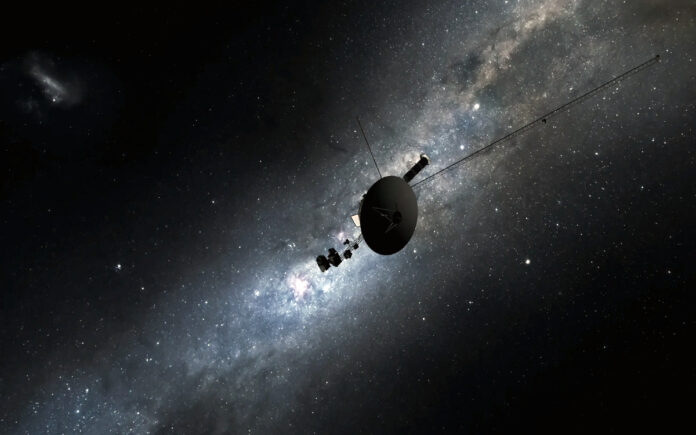Washington: After traveling billions of kilometers through interstellar space, NASA’s Voyager-1 spacecraft has successfully reestablished communication with Earth, albeit through a faint and rarely used signal.
On October 24, NASA restored contact with Voyager-1 after a brief interruption caused by its fault protection system, which activated following an October 16 command to power on a heater. This command led the spacecraft to switch from its primary X-band radio transmitter to a backup S-band transmitter—unused since 1981.
“The transmitter shut-off seems to have been prompted by the spacecraft’s fault protection system, which autonomously responds to onboard issues,” NASA stated.
Designed to protect the spacecraft by conserving power, the fault protection system deactivates non-essential functions when power becomes limited. Voyager-1’s reliance on this system is increasing as it journeys farther from Earth, with communication now taking around 46 hours round-trip due to the distance of over 25 billion kilometers.
The Jet Propulsion Laboratory (JPL) team faced a major challenge when trying to detect the weaker S-band signal, as this band is less effective over such an immense distance. Engineers identified that the fault protection system had reduced the data transmission rate on the primary transmitter. They verified the S-band transmitter was operational on October 22 and began analyzing the root cause of the issue. While troubleshooting may take weeks, restoring consistent contact remains a priority.
Also Read | Against the Tide: Young Surfers Chase Dreams on Pakistan’s Southern Coast
Launched in 1977, Voyager-1 continues to relay critical information from interstellar space, overcoming frequent technical obstacles due to its aging hardware. The spacecraft relies on hydrazine fuel for stability, which it expels in gas bursts to maintain alignment with Earth—requiring about 40 of these daily adjustments.
Also Read | Iron Man’s Warning: Downey Jr. Pledges Legal Action Against AI Use of His Image
Voyager-1 made history by crossing the heliopause in August 2012, becoming the first human-made object to enter interstellar space. Now, drifting further into the Milky Way, its transmissions offer a rare glimpse into the uncharted regions beyond our solar system.



